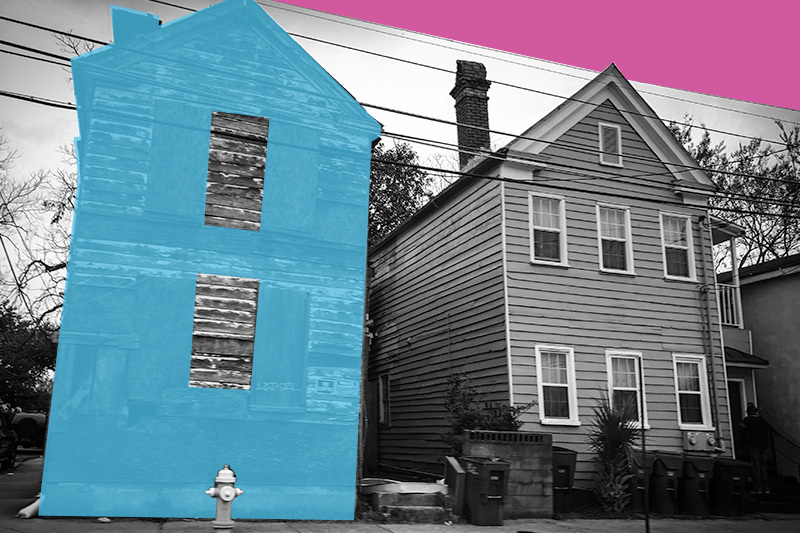Exploring the link between homelessness and COVID-19

With COVID-19 cases continuing to surge across the nation, it’s increasingly clear that people who don’t have a stable living situation find it much more challenging to shelter in place. Homelessness affects as many as 58,000 families — and more than 100,000 children — in the U.S. on any given night. More than three-quarters of homeless families in the U.S. identify as non-white or Hispanic. This means that there’s a large group of people — predominantly people of color — who can’t social distance. This increases their risk of becoming sick, according to Amanda Stewart, MD, MPH, who works in the Division of Emergency Medicine at Boston Children’s Hospital.
That’s why Stewart and her colleagues recently wrote an article appearing in Pediatrics that calls attention to the problem and offers some guidance to help other pediatricians navigate the current landscape.
Why homelessness is a risk factor for COVID-19
With COVID-19 disproportionately affecting communities of color, the dire situation is only likely to get worse, says Stewart. In fact, some experts estimate that another 1.5 million American families will become homeless as a result of the pandemic, further complicating the existing crisis. Stewart points out that in the Boston area in particular, affordable housing is very limited, making it out of reach for many families.
“I’ve cared for multiple children who have become homeless because of COVID-19,” says Catherine Coughlin, MD, a resident at Boston Children’s and a co-author on the Pediatrics piece. She explains that while Boston Children’s recently worked with community partners to pass a moratorium on evictions and foreclosures in Boston —which Governor Baker just extended through October 17 — there are still many families who were staying with others before the pandemic who were asked to leave.
“Some families with housing insecurity have come to the Emergency Department (ED) because they have nowhere to go, either because someone in the home where they were staying became ill with COVID-19, or the host was afraid of catching it and asked them to leave,” Coughlin says.
Other risks for children who are homeless
Children who are homeless and have COVID-19 with mild symptoms may not be able to be released from the ED unless they have somewhere to go where they can self-isolate, Coughlin says.
As a pediatric resident at Boston Children’s, Lukas Gaffney, MD, MPH, and his colleagues noticed that neighborhoods with higher rates of COVID-19 also tended to be ones with higher proportions of Black and Latino residents. They also noticed that these ethnic and racial groups experience a number of neighborhood factors that can contribute to poorer health outcomes, like high rates of poverty, lower education levels, more people who rent versus owning their homes, overcrowded living arrangements, lack of transportation, and higher unemployment rates. These findings were presented during a recent Grand Rounds presentation.
Even children with a dwelling to return to may not have suitable arrangements where they can quarantine if they do become ill. A recent study in the Annals of Internal Medicine reveals that Hispanics and Native Americans had a two to three times higher likelihood of being in a living arrangement without enough bedrooms or bathrooms to meet the quarantine guidelines than whites. Blacks and Asian Americans have close to two times higher likelihood.
In addition to the risk of COVID-19, many children with no stable home have an increased risk of other health problems including asthma, obesity, developmental delays, and infections. They also have higher rates of food insecurity, challenges accessing health care, and may lack cleaning supplies. All of these factors can also make them more vulnerable to becoming ill with COVID-19.
What clinicians can do
This makes it important for all clinicians to ask the right questions to assess their patients’ living situations and daily stressors that can affect their health and wellbeing. Here are some things you can do:
- “The biggest thing is awareness. When seeing and caring for kids, ask about their housing situation and their needs,” Coughlin says. “Also be prepared to help in some way.” For instance, Stewart says that when families come to Boston Children’s ED because they don’t have anywhere else to go, social workers try to get them into a shelter. “If we are having trouble placing them, we also work with community organizations to find other options,” she says.
- Advocate for policies that protect kids and families, such as affordable housing laws. “At Boston Children’s, we try to be a voice for kids,” Coughlin says. This means representing their needs at the State House and speaking on their behalf with elected officials.
- Find creative ways to meet the needs that exist. Massachusetts has passed a homelessness prevention program that provides funding for families who need help with rent, utilities, and groceries. In addition, the City of Boston has worked with public schools to find housing options for 1,000 families who were at risk of becoming homeless. Pediatricians can secure a seat on the board for such initiatives, as well as educate legislators and provide testimony on bills being drafted.
- Collect data and anecdotes that help call attention to disparities. This can go a long way toward helping to shape more effective policies for vulnerable children and families.
- Educate yourself about the latest legislation and resources so you can help all of your patients and families understand the options available to them and help them access the things they need to be healthy and safe.
Get more answers about Boston Children’s response to COVID-19.
Related Posts :
-

Model enables study of age-specific responses to COVID mRNA vaccines in a dish
mRNA vaccines clearly saved lives during the COVID-19 pandemic, but several studies suggest that older people had a somewhat reduced ...
-

Making pediatric health equity research truly equitable: An EDI review process
A burgeoning number of studies are examining pediatric health equity, diversity, and inclusion (EDI). But if not done right, health ...
-

New insight into the effects of PPIs in children
Proton-pump inhibitors (PPIs) are frequently prescribed to suppress stomach acid in patients with gastroesophageal reflux disease (GERD). Prescribing rates of ...
-

Creating the next generation of mRNA vaccines
During the COVID-19 pandemic, mRNA vaccines came to the rescue, developed in record time and saving lives worldwide. Researchers in ...





